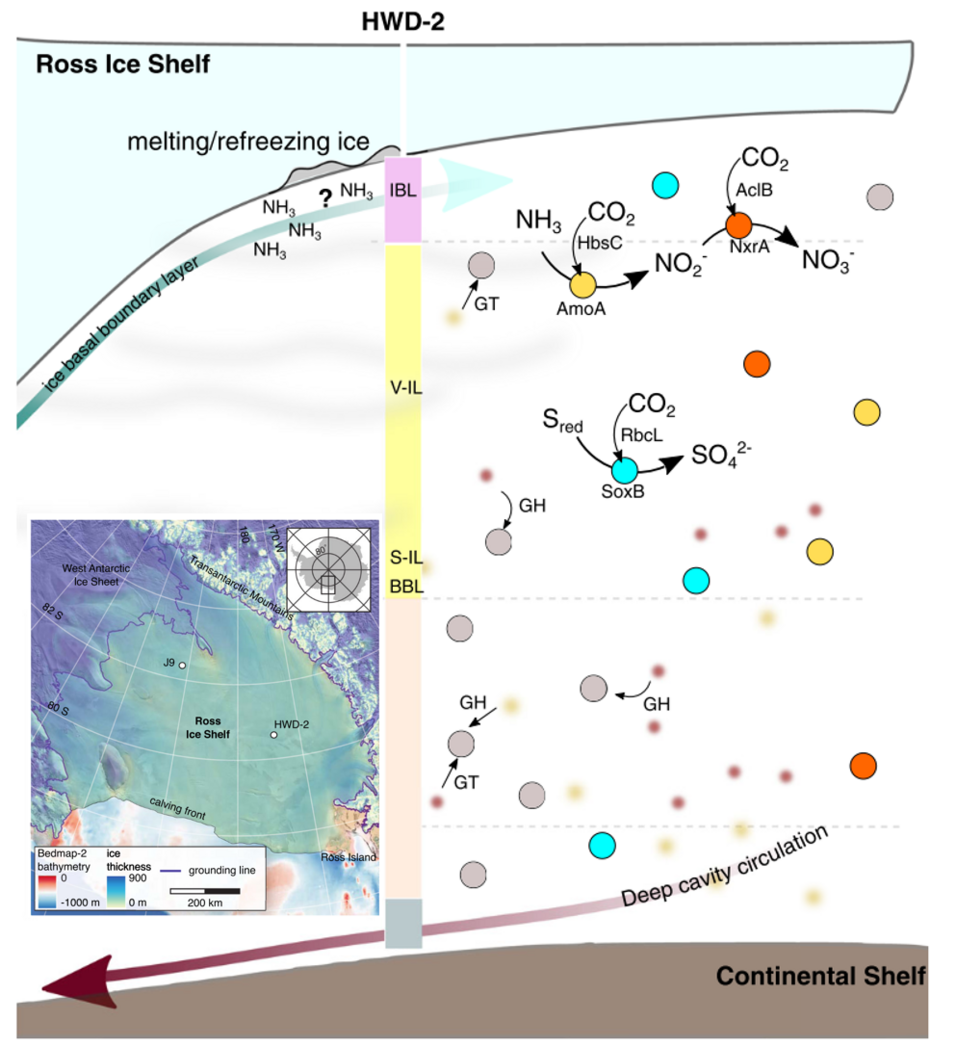Throughout coastal Antarctica, ice shelves separate oceanic waters from sunlight by hundreds of meters of ice. Historical studies have detected activity of nitrifying microorganisms in oceanic cavities below permanent ice shelves. However, little is known about the microbial composition and pathways that mediate these activities. In this study, we profiled the microbial communities beneath the Ross Ice Shelf using a multi-omics approach. Overall, beneath-shelf microorganisms are of comparable abundance and diversity, though distinct composition, relative to those in the open meso- and bathypelagic ocean. Production of new organic carbon is likely driven by aerobic lithoautotrophic archaea and bacteria that can use ammonium, nitrite, and sulfur compounds as electron donors. Also enriched were aerobic organoheterotrophic bacteria capable of degrading complex organic carbon substrates, likely derived from in situ fixed carbon and potentially refractory organic matter laterally advected by the below-shelf waters. Altogether, these findings uncover a taxonomically distinct microbial community potentially adapted to a highly oligotrophic marine environment and suggest that ocean cavity waters are primarily chemosynthetically-driven systems.
Further reading: doi.org/10.1038/s41467-021-27769-5

